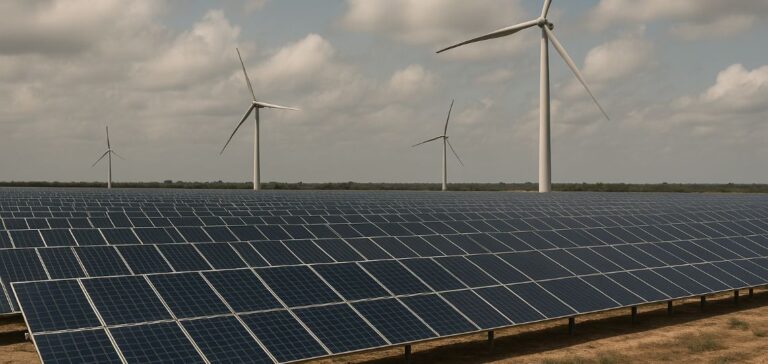Low-carbon electricity sources, including renewables and nuclear power, accounted for 40.9% of global electricity production in 2024, according to data published on April 8 by energy think tank Ember. It marks the first time since the 1940s that this threshold has been crossed, signalling a major turning point in national energy trajectories. Solar led this trend with a 29% increase in output, reaching 474 terawatt-hours (TWh), making it the largest source of new capacity for the third consecutive year.
A momentum driven by renewables
In 2024, renewable electricity generation rose by 858 TWh, a 49% increase from the previous record set in 2022. Solar power doubled its output over the past three years to surpass 2,000 TWh, while wind accounted for 8.1% of global generation. Hydropower remained stable at 14%, continuing as the largest renewable source by volume. These figures are from Ember’s Global Electricity Review, based on data from 88 countries representing 93% of global electricity consumption.
Steady demand sustains fossil output
A 4% rise in global electricity demand contributed to a modest 1.4% increase in fossil-fuel-based generation in 2024. Ember attributed nearly one-fifth of this increase to heatwaves. Adjusted for temperature effects, fossil output would have increased by only 0.2%, with 96% of the additional non-weather-related demand met by low-carbon sources.
Emerging technologies and policy realignment
Expanded use of artificial intelligence, data centres, electric vehicles, and heat pumps added 0.7% to global electricity demand in 2024, double their contribution five years ago. Ember anticipates sustained growth in clean generation, enough to meet a projected annual demand increase of 4.1% through 2030, potentially leading to a structural decline in fossil energy use.
China and India reshaping the global mix
More than half of 2024’s solar generation gains came from China, where low-carbon generation covered 81% of domestic demand growth. India doubled its new solar capacity compared to 2023. These two markets are central to the reshaping of the global energy landscape, as their shift to clean electricity is directly influencing the evolution of international energy policy.





















